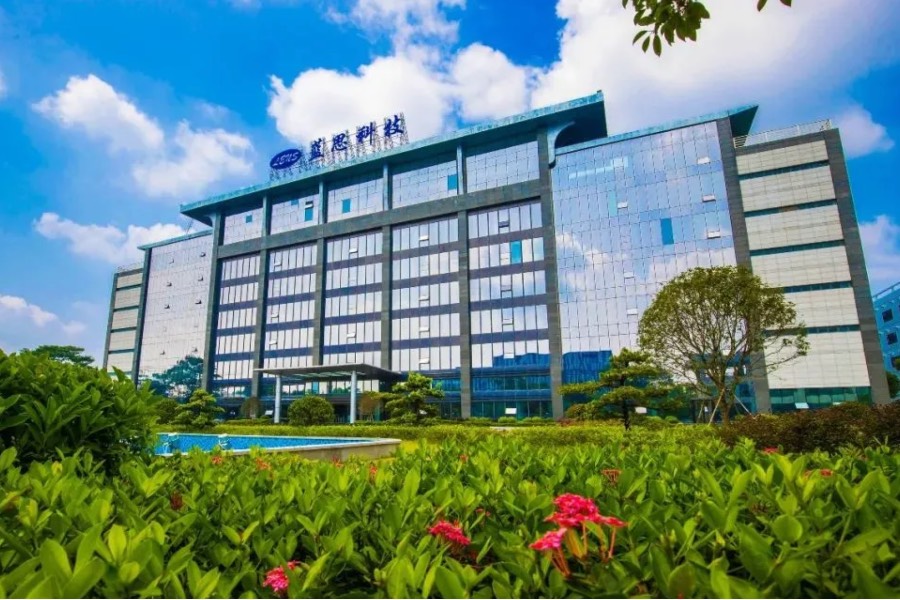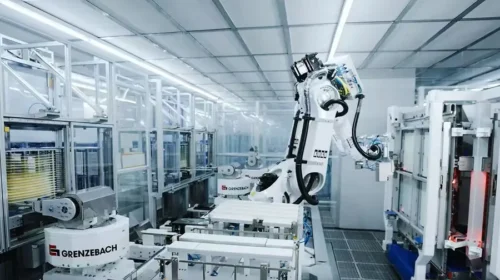Lens Technology approaches second ‘iPhone moment’

The glass screen maker is betting big on AI glasses and embodied intelligence as its next major growth engines
Key Takeaways:
- Lens Technology reported its revenue reached 207 billion yuan in the third quarter, up 19.3% year-over-year
- The glass screen maker is investing heavily in AI wearables and embodied intelligence as fresh growth drivers
Lee Shih Ta
Two decades ago, a company in Central China’s Hunan province smashed through a major corporate barrier when it entered Apple’s airtight supply chain with its scratch-resistant panels that met the U.S. tech titan’s tough standards. Twenty years later, that same manufacturer — Lens Technology Co. Ltd. (6613.HK; 300433.SZ) — is seeking its second “iPhone moment” in the unfolding AI revolution as its older smartphone business matures.
Founder Zhou Qunfei has become the stuff of corporate legend with the story of her rise from female factory floor worker to “Apple supply chain queen.” Since establishing Lens Technology in 2003, she has leveraged sapphire and tempered glass processing to work her way into Apple’s supplier ecosystem, emerging as a key vendor for iPhones, iPads and Macs while becoming the envy of precision manufacturers across the globe.
The company last week released its latest quarterly earnings report following its July Hong Kong listing, which complemented its existing listing in Shenzhen. Its revenue in the first nine months of 2025 rose 16.1% year-on-year to 53.7 billion yuan ($7.54 billion), while its profit jumped by a similar 19.9% to 2.84 billion yuan. Its revenue for the third quarter hit 20.7 billion yuan, up 19.3% year-on-year, lifting its net profit 12.6% to 1.7 billion yuan.
The company’s core handset glass and related structural components remained its bread-and-butter in the latest report. But investors are starting to look for its next new thing to keep its steady growth story alive. Lens attributed its latest growth partly to rebounding smartphone demand, while also drawing attention to sequential volume growth for its products targeting a new generation of AI-powered wearables and embodied intelligence products.
Zhou, who began crafting glass at 16, recognizes that business operations can be as fragile as the glass at her company’s core. With the global smartphone market showing growing signs of maturity, including low single-digit growth and even frequent contraction, she has positioned her company to find new pastures in the emerging fields of intelligent eyewear, embodied intelligence and premium robotics.
Doubling down on AI eyewear
For AI eyewear, Lens says it supplies precision mechanical, optical and acoustic components to a key North American client that it doesn’t identify. Analysts and company watchers believe that company is Meta (META.US), which has co-developed a high-tech pair of smart glasses with Ray-Ban. The product incorporates voice assistants, computer vision and live translation, and is being hailed as the first genuinely commercialized smart wearable of the AI era, registering above-target sales since late 2024.
Global AI/AR glasses shipments hit 6.7 million units in 2024 and are forecast to total 12 million for 2025, up nearly 80% from 2024, according to Canalys and Counterpoint. Meta, formerly known as Facebook, accounts for over 40% of the market and ranks first globally. Its rapid expansion has provided strong demand for Lens as it graduates from mere lens and structural work to higher-value integrated products like surface-mount technology (SMT) and full assembly modules, as well as wireless charging solutions.
The segment contributed to modest sequential revenue and margin growth in the third quarter, though there are no breakthroughs just yet. Management told investors the firm has entered volume deliveries in AI hardware, and that the segment is expected to become next year’s primary growth vector. Much of the growth is likely to come as Meta ramps up its eyewear business in the coming quarters.
Lens has established an optics subsidiary in the Hunan capital of Changsha to develop waveguide lenses and premium components directly serving AI glasses and AR display supply chains. In late February, the company formed a major strategic tie-up with AI eyewear maker Hangzhou Rokid Technology, which Lens supports with its technology.
With the rapid rise of embodied intelligence over the last decade, Lens has been building up a platform to produce four- and two-legged robots on an OEM basis for its clients. The company is on track to open a new headquarters and embodied intelligence innovation center this month, capable of producing 3,000 humanoid robots and more than 10,000 robotic dogs annually — with output already flowing to prominent Chinese and North American buyers. That shows that Lens could potentially become an important upstream core supplier in the AI robotics industry.
Lens raised about HK$4.77 billion ($614 million) in its July listing in Hong Kong, with 48% of that earmarked for product expansion and another 28% for international initiatives. Roughly 70% of the listing proceeds remained unused at the end of September, reserved chiefly for offshore infrastructure commitments and AI investments, giving the company substantial financial firepower for operational flexibility.
Buildout for future supply
The company’s net operating cash flow totaled a solid 5.84 billion yuan in the first nine months of the year, though that was down about 7% from a year earlier. With a sizable 7.26 billion yuan of cash in its coffers, the company should have plenty of financial resources to support its ongoing R&D into new areas. The company’s construction-in-progress balance in the third quarter leaped about 48% year-on-year due to expansion of its manufacturing facilities in Vietnam and Thailand in anticipation of growing demand from offshore clients, including mass production for AI-related products.
Lens current commands a price-to-earnings (P/E) ratio of 31 times for its Hong Kong stock, ahead of the 24 for Sunny Optical (2382.HK) and more modest 13 for Largan Precision (3008.TW). Such a premium reflects Lens’ edge in the ride towards AI hardware-driven wearables alongside its early move into robotics, as it roams from its roots as a contract supplier to Apple. Continued acceleration of its eyewear business would validate the company’s move into embodied-AR optics, opening the potential for even more multiple expansion, though slower-than-expected progress could have just the opposite effect.
To subscribe to Bamboo Works weekly free newsletter, click here






